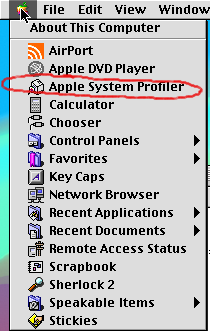

#Apple configurator profile how to#
Reconfigure the profile in iPhone Configuration Utility.įor a description of the profile settings and instructions on how to configure the profile, please refer to the documentation enclosed with iPhone Configuration Utility.Īfter you configure the profile with iPhone Configuration Utility, the new configuration profile is displayed in the Configuration profiles section in the properties window of the iOS MDM Server.IPhone Configuration Utility then starts if you have it installed. The configuration profile ID should be unique the value should be specified in Reverse-DNS format, for example,. In the New configuration profile window, specify a name and ID for the profile.The New configuration profile window opens. In the Configuration profiles section, click the Create button.In the properties window of the iOS MDM Server, select the Configuration profiles section.The Mobile Device Server properties window opens. In the context menu of the iOS MDM Server, select Properties.In the workspace of the Mobile Device Servers folder, select an iOS MDM Server.In the workspace of the Mobile Device Management folder, select the Mobile Device Servers subfolder.In the console tree, select the Mobile Device Management folder.To create a configuration profile using iPhone Configuration Utility and to add it to an iOS MDM Server:

does not support iPhone Configuration Utility any longer. Apple Configurator 2 works only on devices running macOS if you do not have such devices at your disposal, you can use iPhone Configuration Utility on the device with Administration Console instead. You can also use deviceid or any other device-specific value.To create a configuration profile, you can use Apple Configurator 2, which is available at the Apple Inc. App configuration tokens includes a list of variables that can be used.
#Apple configurator profile serial#
For example, to show the serial number, enter. Device tokens are used to add device-specific information. You can also add device tokens to your custom configuration files. The file you imported is shown in the File contents area. The max file size is 1000000 bytes (just under 1MB). This name is shown on the device, and in the Intune status.Ĭonfiguration profile file: Browse to the configuration profile you created using the Apple Configurator or Apple Profile Manager. For information on resolving incompatible settings, search for Configuration Profile Reference and Mobile Device Management Protocol Reference on the Apple Developer website.Ĭustom configuration profile name: Enter a name for the policy. You'll enter this file in the Intune profile.īe sure the settings you export from the Apple Profile Manager are compatible with the iOS/iPadOS version on the devices. Enter the general settings for the device.ĭownload and save this file. When using Apple Profile Manager, be sure to:Įnable mobile device management in Profile Manager.Īdd iOS/iPadOS devices in Profile Manager.Īfter you add a device in Profile Manager, go to Under the Library > Devices > select your device > Settings. For information on resolving incompatible settings, search for Configuration Profile Reference and Mobile Device Management Protocol Reference on the Apple Developer website. When using Apple Configurator to create the configuration profile, be sure the settings you export are compatible with the iOS/iPadOS version on the devices. Before you beginĬreate an iOS/iPadOS custom device configuration profile. This article provides some guidance on using Apple Configurator and Apple Profile Manager, and describes the properties you can configure. They also create a baseline or standard for iOS/iPadOS in your organization. Once assigned, the settings are distributed. In Intune, you import this file, and then assign the profile to your iOS/iPadOS users and devices.

You can use these tools to export settings to a configuration profile. When using iOS/iPadOS devices, there are two ways to get custom settings into Intune:

They're designed to add device settings and features that aren't built in to Intune. Using Microsoft Intune, you can add or create custom settings for your iOS/iPadOS devices using "custom profiles". Use the built-in certificates profile for authentication. Instead, use the built-in profiles for sensitive information, as they're designed and configured to handle sensitive information.įor example, use the built-in Wi-Fi profile to deploy a Wi-Fi connection. Custom configuration profiles shouldn't be used for sensitive information, such as WiFi connections or authenticating apps, sites, and more.


 0 kommentar(er)
0 kommentar(er)
